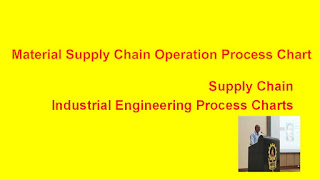17 October Birthday - Ralph M Barnes
Celebrate the birthday of a famous second generation industrial engineer - Ralph M. Barnes - Birthday Barnes - 17 October.
Read contribution of Barnes in October 2025 Issue of Modern Industrial Engineering LinkedIn Newsletter.
October 2025 Issue focuses on Barnes - Maynard - Human Effort - Machine Effort Industrial Engineering.
https://www.linkedin.com/pulse/modern-industrial-engineering-october-2025-barnes-maynard-kvss-8vbjc
Ralph Barnes - Contribution to Industrial Engineering
http://wf-eng.slerahosting.com/html/barnes__rules.html
https://nraoiekc.blogspot.com/2020/11/design-of-work-systems-machine-methods.html
Articles and Books by R.M. Barnes - Bibliography
https://nraoiekc.blogspot.com/2013/07/articles-by-rm-barnes-bibliography.html
Barnes - Industrial Engineering and Management, Problems and Policies - 1931
https://nraoiekc.blogspot.com/2021/11/barnes-industrial-engineering-and.html
Source - NPC India LinkedIn Message on 17.10.2025
Work Systems - IISE Definition and Evolution of Work Systems Design in Industrial Engineering
https://nraoiekc.blogspot.com/2017/10/work-systems-definition-and-evolution.html
IE - Human Effort Industrial Engineering - Machine Effort IE - Mechanization and Automation - Barnes, Groover, Wysk
https://nraoiekc.blogspot.com/2020/10/ie-human-effort-engineering.html
Human Body Science Knols - Bulletin Board
https://nraoiekc.blogspot.com/2012/04/human-body-science-knols-bulletin-board.html
Contribution of H.B. Maynard
H.B. Maynard - HUMAN EFFORT INDUSTRIAL ENGINEERING - Methods Time Measurement (MTM) - Introduction
H.B. MAYNARD - Operation Analysis - Machine Work Study.
Lesson 33. - Industrial Engineering ONLINE Course
https://nraoiekc.blogspot.com/2020/06/hb-maynard-operation-analysis.html
Method Study and Motion Study - Maynard's Explanation
https://nraoiekc.blogspot.com/2023/07/method-study-and-motion-study-maynards.html
Machine Work Study - Productivity Improvement Based on Machine and Machine Work Redesign
https://nraoiekc.blogspot.com/2019/06/machine-work-study-productivity.html
October - Month Birthdays - Management Scholars and Professionals
Ud. 14.10.2024
Pub. 1.7.2024

